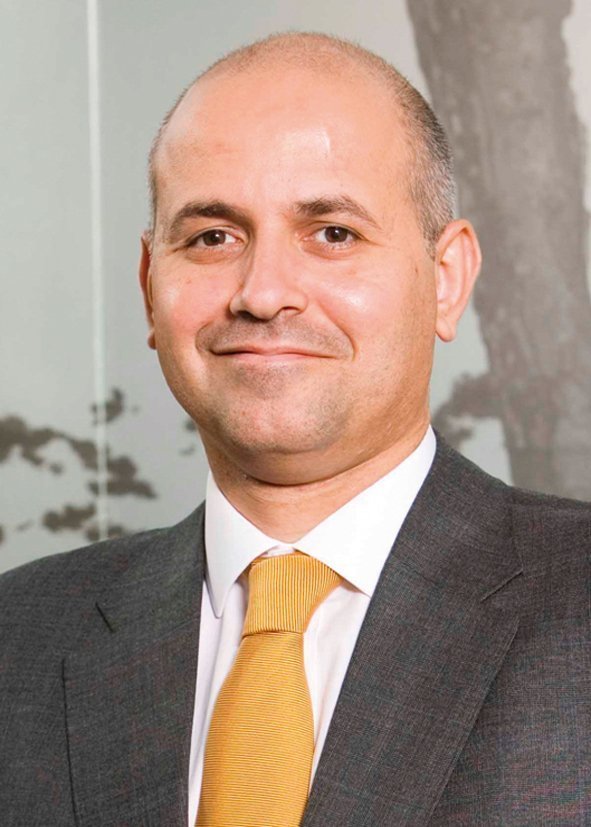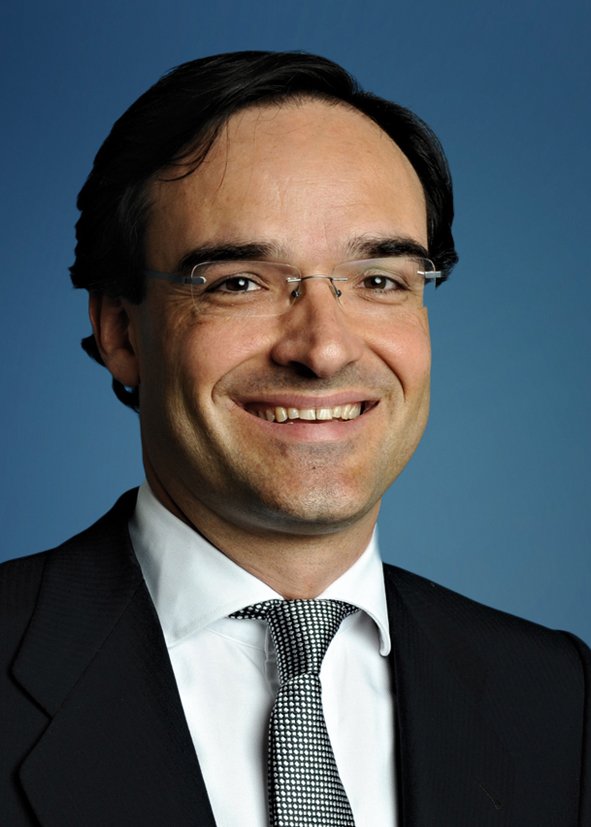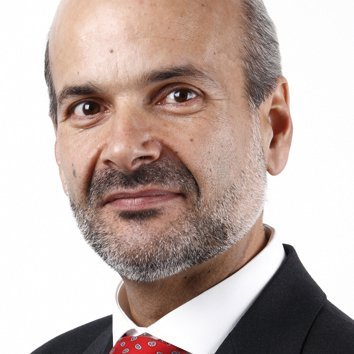Restructuring & Insolvency Report 2010: Finding the right tools for the job
Recent months have seen the Portuguese and Spanish governments enter into increasingly desperate efforts to safeguard investor confidence and the security of their sovereign debt, but such issues are only a larger scale reflection of the challenges facing Iberian businesses, say lawyers.
Liquidity pressures, restrictive bank lending and inflexible insolvency laws mean that they have to work more creatively than ever to save companies facing the threat of bankruptcy
Lawyers in both countries report that the start of 2010 proved highly challenging to many clients, and following the summer, consumer spending has also fallen sharply bringing pressure to new parts of the economy or those businesses already facing cash flow concerns. In addition, many companies that had refinanced earlier in the downturn are now seeing those loans reach maturity at a time when banks are much more risk averse.
“Business uncertainty combined with credit access problems and the fact that the economic and financial environment will remain very difficult for some time is forcing companies that might have expected to avoid restructuring to consider it and every available alternative,” says Frederico Gonçalves Pereira, Head of the Litigation and Labour practices at Vieira de Almeida (VdA) in Lisbon.
In Spain the entire economy is now affected by the downturn, say lawyers there. High profile collapses may have been originally confined to the real estate and construction sectors, with large debts but few creditors, but other sectors are clearly now suffering.
“The degree of uncertainty is the same or even worse as a result of the collapse of other areas of the economy. In other words, insolvency has started to affect the ‘real’ economy,” says Agustín Bou, Head of Restructuring at Jausas.
Lawyers point to the insolvency of companies such as Spanish travel operator Viajes Marsans and previously its subsidiary Air Comet as indicative of traditional bankruptcies, with large numbers of employees and creditors, requiring a more prolonged negotiation process. Many highlight the relative vulnerability of those companies still dependent on the domestic economy and those that have expanded internationally.
“Clients still mourn the depressed local business atmosphere but those with a strong international position or export practice demonstrate more confidence in the recovery of the international markets,” says Antonia Magdaleno Carmona, Head of Litigation at Broseta in Madrid.
International scale clearly brings comfort but so too does greater financial sophistication, suggest others. “The major IBEX companies, for example, have undergone refinancings and remain profitable in part because they have a much more diversified business model. They are able to draw on new pools of capital, and are active in markets that continue to grow,” says Alberto Núñez-Lagos, restructuring and insolvency partner at Uría Menéndez in Madrid.
The same is true in Portugal. The country’s most international companies have inevitably found themselves less exposed to the domestic downturn. “The crisis evidently affects every aspect of the country’s economy. The recurring challenge for businesses of all sizes is to find new sources of finance, either at home or abroad, or at least to renegotiate the terms of the loans they already have,” says Nuno Libano Monteiro, Head of Litigation and Insolvency at PLMJ in Lisbon.
Bank over-capacity
For those businesses that find themselves in financial difficulties, a recurring issue is when to seek the necessary legal assistance, communicate with their creditors or file for insolvency. Many leave it too late, experts say.
“Clients have been very reluctant to use insolvency proceedings as a tool to restructure their debt and come to composition agreements with their creditors. As a result, we are facing situations where a restructuring becomes unfeasible forcing companies into liquidation,” says José Luis Huerta, Managing Partner of Hogan Lovells in Madrid Company directors need to be aware of the specific financial liabilities and the potential for criminal liability for continuing to operate a business while insolvent, but lawyers again emphasise the need for dialogue with lenders. Nonetheless, many recognise that international banks and those Iberian banks with a strong international profile often take a very different approach to refinancing than domestic banks.
“In some respects the Portuguese banks saw the flood of insolvencies coming but their ability to react has been affected by their own liquidity issues,” says Gonçalves Pereira at VdA. “If they are unable to lend this produces an obvious knock-on effect. Many companies with otherwise sound business models are collapsing because of acute financial issues.”
Portuguese and Spanish banks have made significant use of European Central Bank (ECB) funds to support their own balance sheets (Spain’s alone accounting for 26% of total ECB lending) but many are trying to reduce their reliance on this, say lawyers. Consequently banks have to seek alternative fundraising options which have prompted some to become even more risk averse.
“Companies are looking to de-leverage at the same time the banking sector also faces over-capacity. The problem facing many companies is not the nature of their business but a structural problem affecting the entire finance sector,” says Pedro Vieira de Siza, Managing Partner of Linklaters in Lisbon.
This is certainly the case in Spain, say lawyers, where the savings banks (cajas) have been forced to consolidate as a result of the liabilities of many following the collapse of the real estate and construction sectors. Some suggest that, post-merger, many of the merged cajas are no more stable than their constituent parts.
The Bank of Spain, like the Bank of Portugal, requires financial institutions to make provisions for bad loans, and for many cajas their exposure has simply proved too big for their balance sheets. The opaque nature of their governance systems meant also that it was often too late before the full extent of their own financial difficulties came to light.
For some, the banking consolidation process evident in Spain has therefore only just started. The Bank of Spain’s reorganisation fund, FROB, was intended to encourage consolidation in the sector, but the opportunity has not been taken, says Antonio Fernández, Head of Restructuring and Insolvency at Garrigues. “The aim was to reduce the over-capacity in the market, and to encourage inter-regional mergers, but instead it has enabled banks from different parts of the country to get together – which has meant no need to close branches or evident synergies in the way the different elements do business.”
Extend and pretend
Acutely aware of their own financial concerns, the focus of many domestic banks is moving towards those companies to which they already have significant exposure, or to businesses in regulated sectors where there are strong cashflows – utilities, healthcare and telecoms – say lawyers. Companies beyond these areas have therefore to increasingly rely on capital-raising solutions outside of the banking system.
Notable is the continuing need for divestments by some of the major real estate, construction and infrastructure companies. Ferrovial recently announced the sale of its airport ground services operation Swissport to PAI Partners for €654m, which followed the sale of a 10% stake of its Canadian 407 Express Toll Route concession for €640m, and its announced intention to sell 10% of its holding in UK airports operator BAA.
Lawyers report that once “exotic” corporate capital-raising methods are now the mainstream, including rights and bond issues, while others look increasingly to foreign lenders and investors.
“High yield debt, once termed junk bonds, is now a growing feature of the corporate finance markets. It is no longer an investment bank only product. But such structures are a long way beyond the schemes that we see many banks still have a preference for,” says Iñaki Gabilondo, Managing Partner of Freshfields Bruckhaus Deringer in Madrid. 
There is a clear difference between real refinancing, which is much harder to come by, and the “extend and pretend” schemes that some banks continue to engage in, note others. “We see banks giving just enough oxygen to keep the patient alive. They are very reluctant to put good money after bad, or to make further loss provisions to their own balance sheets,” says Núñez-Lagos at Uría Menéndez.
If companies want new finance they have to be prepared to restructure,says Fedra Valencia, litigation partner with Cuatrecasas in Madrid. “But creditors also need to accept that in some restructuring situations they may get reduced returns or be forced to take ‘haircuts’.”
Many banks continue however to be very positional in their negotiations, say lawyers. The recent Panrico deal saw private equity owners Apax lose control to a syndicate of banks after attempts to re-finance the leverage package failed – the banks preferring to take equity in lieu of further debt.
“The position being taken by some banks domestically is often very different to that adopted by banks internationally, which are more willing to take a hit when they see the necessity to do so and who take a very much more pragmatic approach,” says Gabilondo at Freshfields.
Kill or cure
A recurring issue for companies facing financial difficulties is not creditors’ abilities to foreclose on debtor companies, or debtors’ ability to enter insolvency proceedings, it is the inability of creditors and debtors to find pre-insolvency solutions, say lawyers in both Spain and Portugal.
“If you want to kill a company, then Spain’s legislation is very efficient. It enables you to define the creditors, the assets and the liabilities. It allows a very precise liquidation. If your aim is to keep the business running then you have to look elsewhere,” says Fernández at Garrigues.
The two main problems are the rigidity of the current insolvency law in certain aspects like the “convenio” or the pace at which the process develops, coupled with the heavy burden that commercial courts suffer as a result of an avalanche of filings, adds Jesús Almoguera, Head of Corporate at Ashurs t in Spain.
t in Spain.
Without a formal pre-insolvency framework there is always the fear that one of the creditors will jump, forcing a debtor company into insolvency. “The problem of an unhelpful creditor is not only an issue for the debtor, but also invariably for the other creditors too,” says Libano Monteiro at PLMJ.
In Portugal, voluntary insolvency is regarded as signing a corporate suicide note. “In some parts of the world, insolvency is seen as a fact of corporate life – in the US companies enter Chapter 11 bankruptcy protection and often come out as stronger businesses – in Portugal it is regarded as a failure of the company, its directors and managers and from which there is often no hope of recovery,” says fellow PLMJ partner Paulo Farinha Alves.
In Spain, efforts have been made to create more flexibility, and a review of the insolvency legislation is currently underway, but there remains a lack of emphasis on “workouts” and “turnarounds”, say lawyers.
“We are in the same situation we were a decade ago in terms of a lack of formal tools that enable us to pre-empt the insolvency process and to encourage new finance to be injected, through new protections or preferences,” says Javier Castrodeza, Head of Restructuring and Insolvency at Cuatrecasas, GonçalvesPereira. 
The problem that distressed companies now face is an excess of bank debt, while in the early 1990s it was largely industrial problems and creditors were mainly trade creditors, workers and the state, adds Almoguera at Ashurst. “Unfortunately, it is likely that we start to see more of the latter in the near future, but in any case the law should provide enough flexibility to deal with different problems and types of creditors differently.”
Juan Ignacio Fernández Aguado, restructuring and insolvency partner at CMS Albiñana & Suárez de Lezo, agrees: “The current law is too long, too rigid and goes into too much detail.”
Spain may see planned amendments to its insolvency legislation in early 2011, but some lawyers sense reluctance within the relevant Commission to make the necessary pre-insolvency changes because they do not fully understand them. France has recently made comparable legislative changes in this regard that could be copied in Spain, say some.
“Those involved with making the changes are often too far removed from day-to-day practice and the imminent needs of companies, the challenges of implementing the existing rules in the courts and some of the creative solutions already being applied in Spain and elsewhere to offer companies a better chance of survival,” says Núñez-Lagos at Uría Menéndez.
Lawyers highlight the recent refinancing of Spanish company La Seda that took place under English law (due to the prominence of UK creditors) that involved a debt-for-equity swap, an injection of new equity, the release of a creditor and the creation of a binding scheme of arrangement – the latter unavailable in Spain.
“Spanish insolvency proceedings provide the only basis upon which dissenting creditors can be ‘crammed’ down. The use of a scheme of arrangement available as a matter of English law, was in this case perceived as the most viable way of facilitating a successful restructuring, whilst avoiding the adverse impact of a formal insolvency,” says Iñigo Villoria, a restructuring and insolvency partner at Clifford Chance in Madrid. For some, the ability to find pre-insolvency solutions is however less about the quality of the law than the courts and professionals involved in the process. “The courts are under a lot of pressure and working too slowly, which increases the need to try to reach out of court agreements or avoid conflict situations,” says José María Álvarez, a litigation partner at Gómez-Acebo & Pombo.
Toni Borrás, insolvency partner at Roca Junyent agrees. “Spain’s current Bankruptcy Act was a major advance over previous insolvency laws, which in parts dated back to the nineteenth century. This has helped adapt the law to current economic realities. The Commercial Judges in many cases are highly imaginative, and look to streamline proceedings, but the truth is that they are overwhelmed.”
In Portugal, it can take years to reach the successful conclusion of an insolvency proceeding which can be fatal to both debtor and creditors, says Filipa Cotta at PLMJ. Recent changes have created dedicated commercial and insolvency courts but the first eight months of 2010 saw an average of 400 insolvency filings per day.
Between January and August 3,530 insolvency proceedings were started in Portugal, adds Helena Soares de Moura, at Morais Leitão Galvão Teles Soares da Silva (MLGTS). “The law sets short periods of time in which decisions have to be agreed and made and so deadlines are often not met. Of course, when a court takes four or five months to decide on a simple pleading it is hard to keep up with clients’ expectations.”
Others say that judges’ intervention is still excessive and it remains necessary for insolvency practitioners and creditors to have broader decision-making capabilities.
“A key problem is the length of the proceedings, in particular during the liquidation of the insolvent entity’s estate. To overcome such difficulty we advise our clients to carefully select an effective and pro-active insolvency administrator,” says Tito Arantes Fontes, partner with Uría Menéndez-Proença de Carvalho.
Liquidation
The relative inflexibility of the legislation and the pressures on the courts mean that in both Spain and Portugal once a company enters a formal insolvency process it invariably results in liquidation.
“When a disease is terminal, the care is always palliative. There are no alternatives to courts in seeking effective protection from creditors. Lawyers should, nevertheless, advise clients on preventive measures to avoid terminal situations,” says José Alves Pereira, Managing Partner at Lisbon’s Alves Pereira & Teixeira de Sousa.
The challenge facing lawyers therefore is how to create solutions in the best interests of creditors and companies with the tools they already have.
The main problem that we face in Spain is the legislative limitation for restructuring agreements, which is that they cannot establish a debt repayment period of longer than 5 years and/or repayment of less than 50% of the amount of the debt, says Iñigo Erláiz Cotelo at Gómez-Acebo & Pombo. “In some cases, this is forcing companies to go into liquidation instead of reaching agreements which could make their businesses viable.”
Lawyers report however that despite the reluctance of some financial institutions to accept losses on deals, or to foreclose, the extent and depth of the economic situation will force many to act more strategically in the future. Some suggest that financial institutions are already selecting key players in certain business sectors – if a competitor falls it creates more market share.
“Due to the fact that a sizable number of companies have collapsed as a result of the economic downturn, stronger players – that have taken timely turnaround measures gaining efficiency or which enjoy greater capitalisation – seem to be rather optimistic about their immediate future,” says Jordi Maristany, partner with Deloitte Abogados in Barcelona.
Lawyers do perceive movement among domestic institutions, however slow. “The aim is to create a framework that encourages and protects new investments in struggling businesses. Often now we see the state tax and social security authorities take a much harder line and almost idealogically oppose new repayment terms. At least the banks are able to take a commercial view,” says Castrodeza at Cuatrecasas.
Some already sense that in certain business sectors Spain and Portugal may have already begun to turn a corner. “Most Spanish corporates have already undergone some refinancing or restructuring of their debt, so current banking documentation is generally suitable for current market conditions. Although market conditions will presumably remain weak for a long period, companies now seem to be better prepared to afford financial commitments,” says Pedro de Rojas, insolvency partner at Linklaters in Madrid.The ultimate guides on lending policy are the Bank of Spain and Bank of Portugal, conclude lawyers, as they define the loss provision regulations that now characterise the unwillingness of domestic institutions to either cut unrealistic financing lifelines or to accept losses on otherwise viable investments.
“It is up to us lawyers who deal with the issues on a daily basis to come up with the arguments to support the necessary changes required. To demonstrate the alternatives, to show that they can work and to try and change the perception of insolvency as a terminal process,” says Pedro Siza Vieira at Linklaters in Lisbon.












